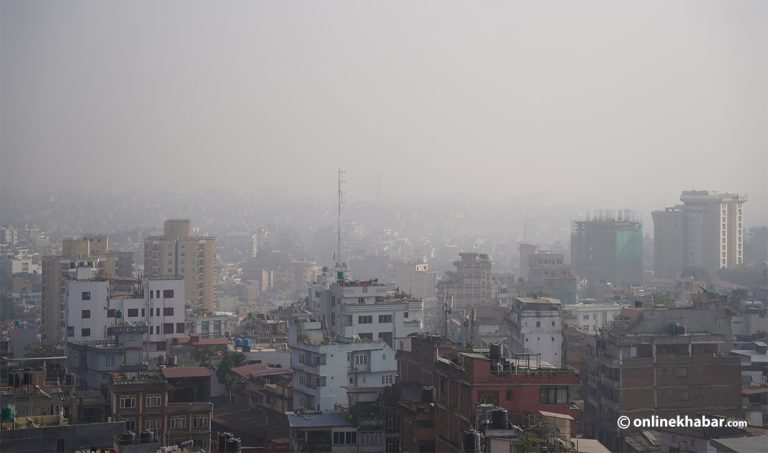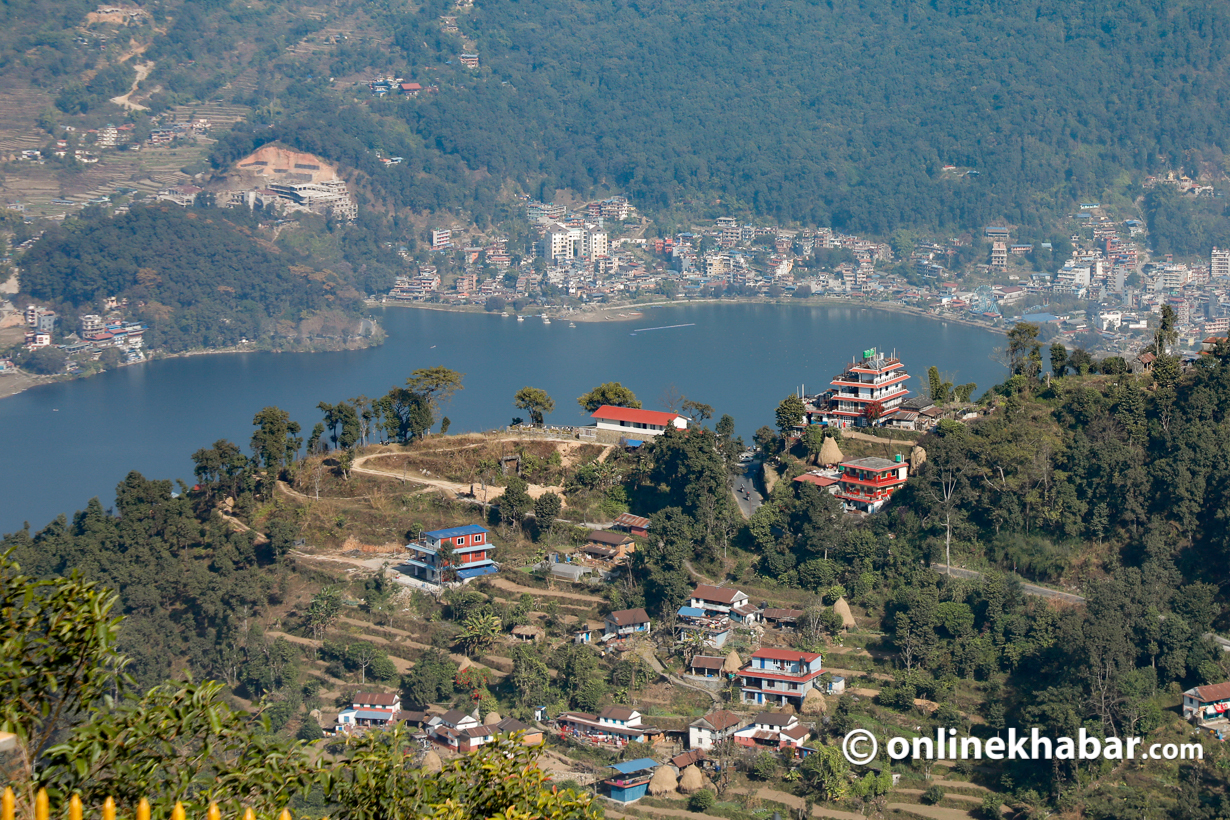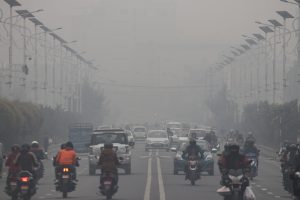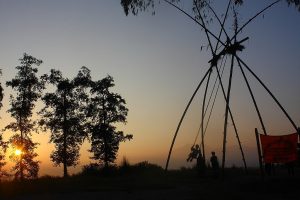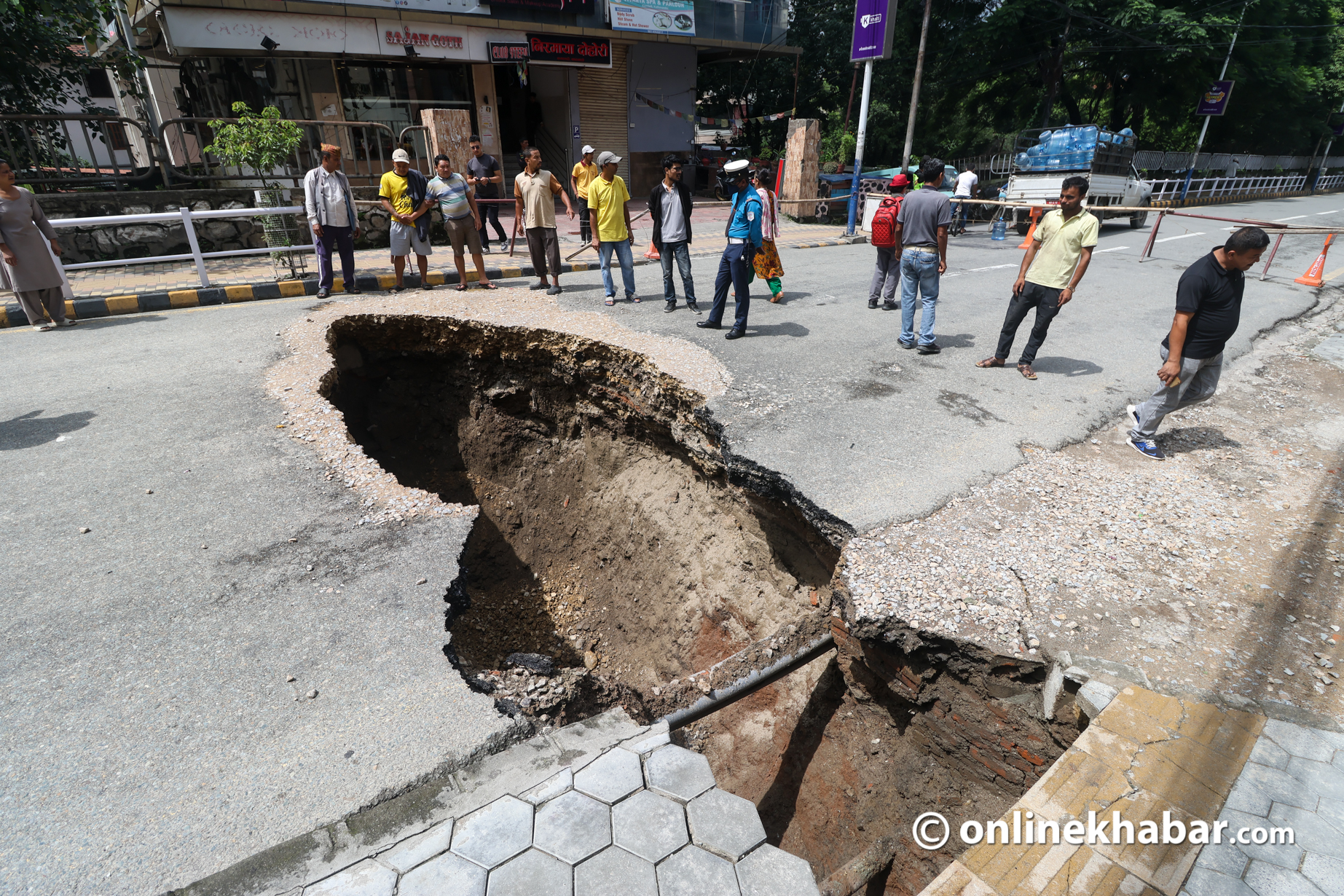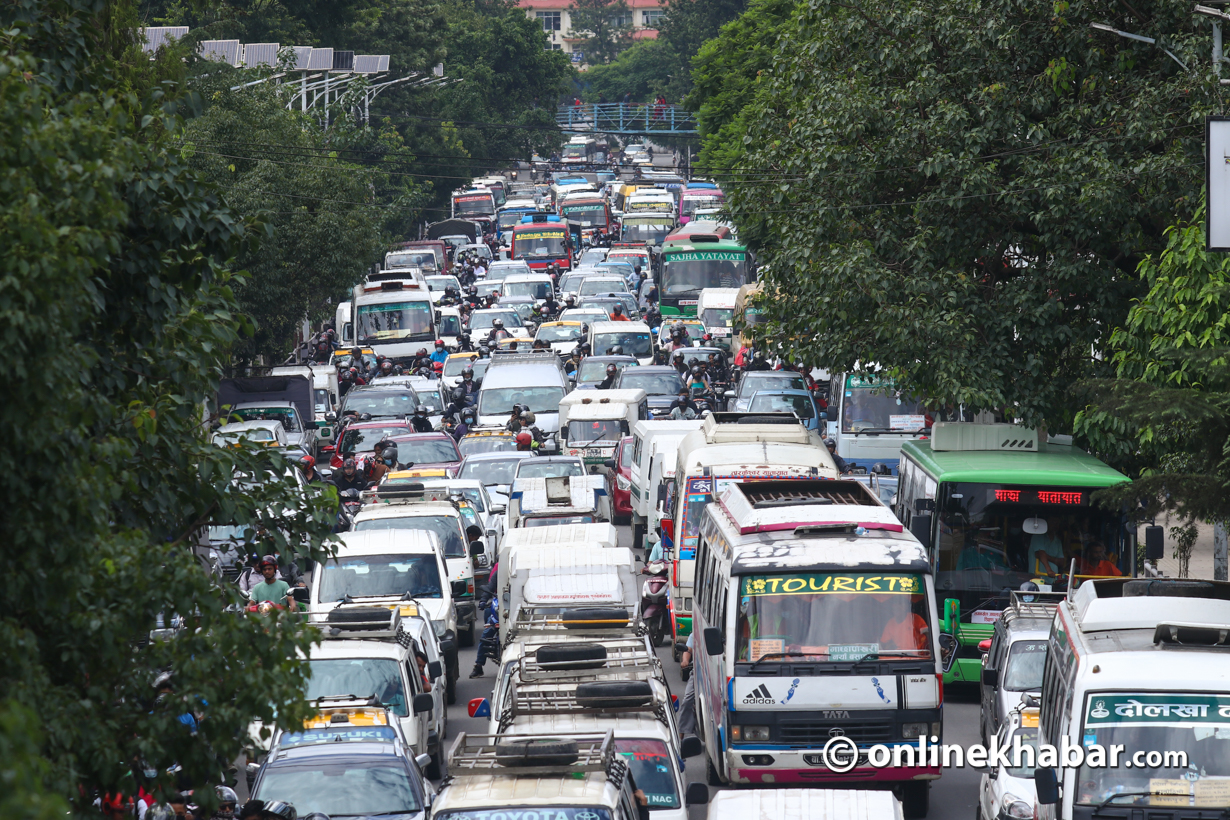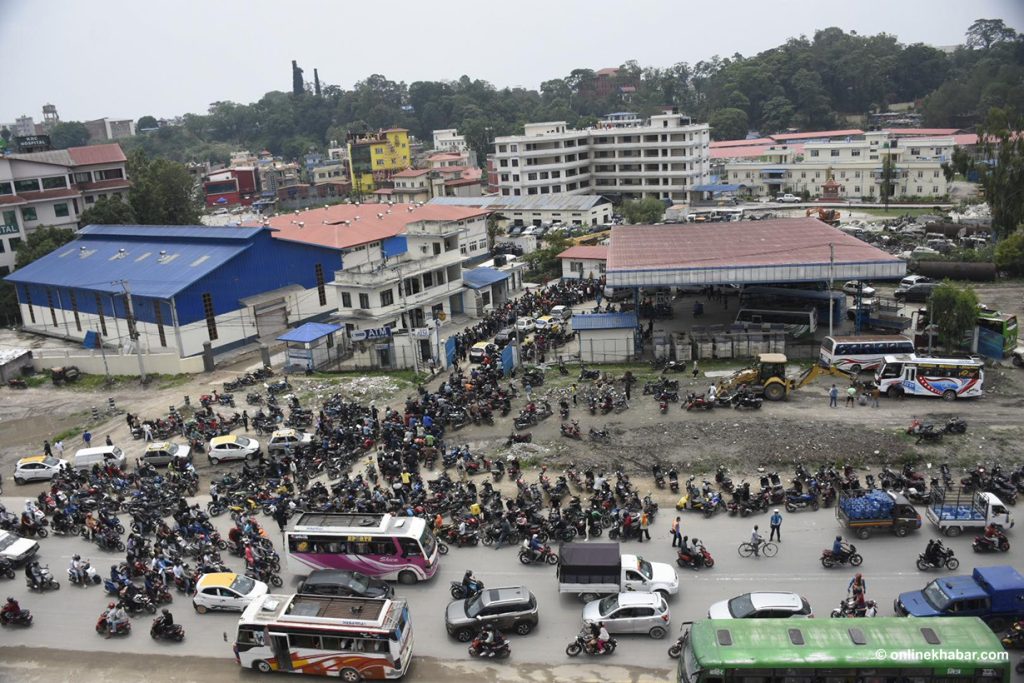
The skies over Kathmandu Valley and much of the country have been hazy for several days, primarily due to air pollution. The reduced visibility is attributed to dust particles in the atmosphere, although clearer conditions were observed today as the sun broke through the haze.
This morning, thick smog blanketed areas including Swayambhu, Kirtipur, Ratna Park, Khumaltar, and their surroundings. In the Terai-Madhesh region, fog was observed, which differs from smog in its higher water content (relative humidity). Smog, on the other hand, is drier with minimal moisture.
During winter, limited rainfall and stagnant air often result in increased air pollution. Senior meteorologist Mina Kumar Aryal from the Department of Hydrology and Meteorology’s Forecast Division explained that heavy rainfall or strong winds are necessary to clear pollutants like dust and smoke from the atmosphere. However, neither condition is expected in the near term.
“There is no immediate likelihood of rainfall,” Aryal said. “Although light clouds are forming over Koshi, Bagmati, and Gandaki, the chances of rain remain low.”
Kathmandu Valley’s bowl-shaped geography exacerbates the situation by trapping polluted air, preventing it from dispersing quickly. Aryal emphasised that rainfall is essential to wash away the pollutants and restore clear skies.
Rising pollution linked to fires
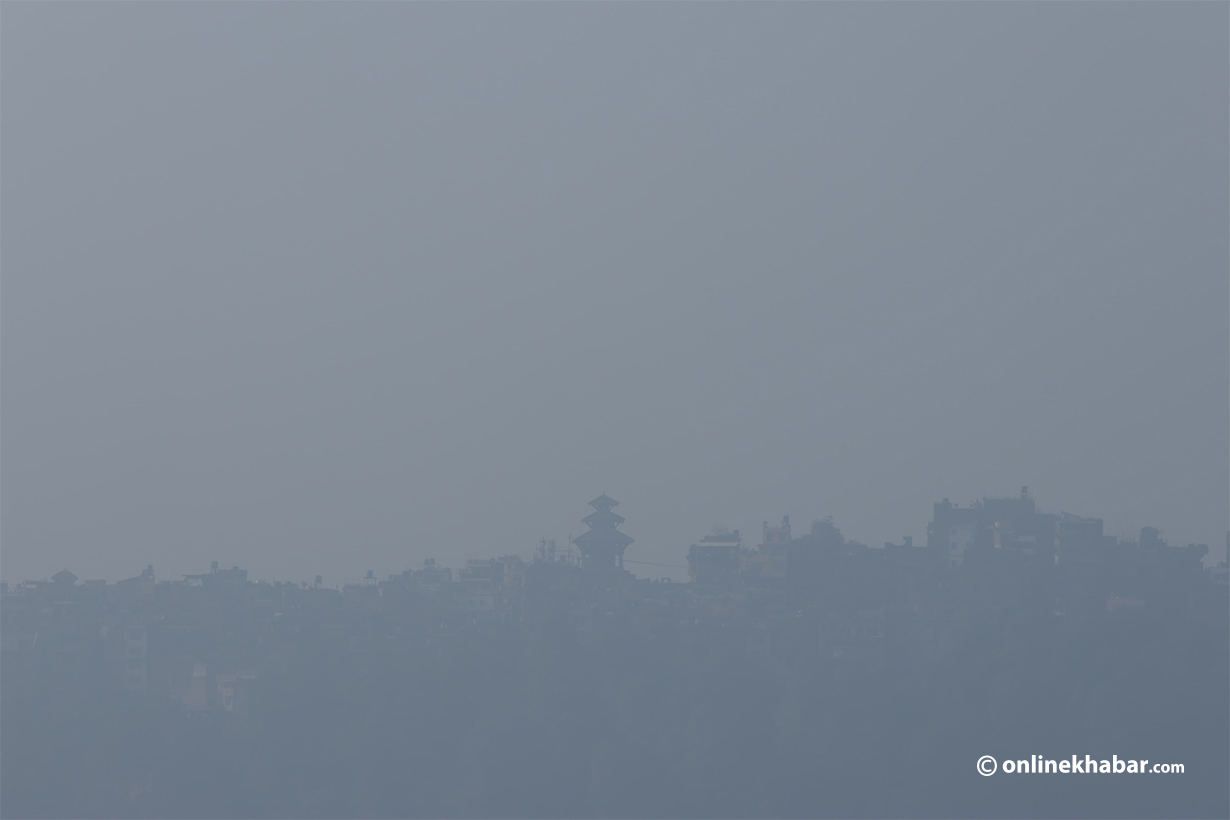
Smog has been reported across much of the country, with the Meteorological Forecasting Division linking the worsening air quality to recent increases in fire incidents.
“Windstorms can blow pollutants away, and rain can wash away dust particles in the atmosphere,” Aryal said. “Unfortunately, neither scenario is likely at present.”
Major contributors to air pollution include smoke from fires, emissions from industries and vehicles, and dust from construction activities. According to the National Disaster Risk Reduction and Management Authority, fire incidents have surged in recent days. Between November 17 and 26, 13 of the 14 disaster events recorded on November 25 alone were fire-related.
Air quality index shows hazardous levels
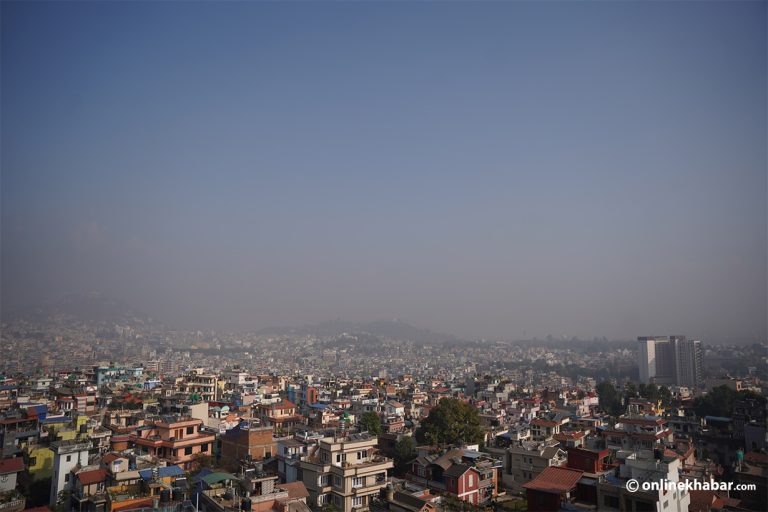
The Air Quality Index (AQI) readings from the Department of Environment identified Khumaltar in Lalitpur, Ratna Park in Kathmandu, Bhaktapur, and Bharatpur in Chitwan as the most polluted areas. These locations were marked in red, indicating health risks for vulnerable groups. Nepalgunj in Banke, Dhankuta, and Shankha Park in Kathmandu also recorded poor air quality.
In 2020, Kathmandu was ranked as the world’s most polluted city, with its AQI surpassing 400. According to the disaster response action plan passed by the Council of Ministers in 2020, an AQI above 300 necessitates a state of emergency. However, no such declaration was made at the time.
Experts warn that prolonged exposure to pollution can lead to severe health issues, including cancer. Doctors recommend avoiding outdoor activities such as morning walks, wearing masks and protective glasses, and covering the body completely when stepping out.
The rising urbanisation in Kathmandu, emissions from vehicles, dust from construction, and fires have significantly contributed to the worsening air quality. While the constitution guarantees compensation for those affected by pollution, the government has yet to take effective measures to curb pollution or provide compensation to victims.
